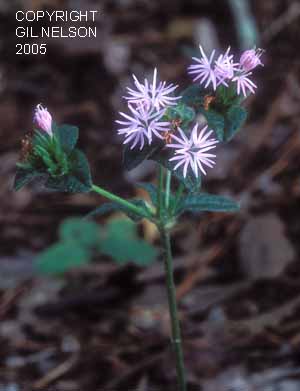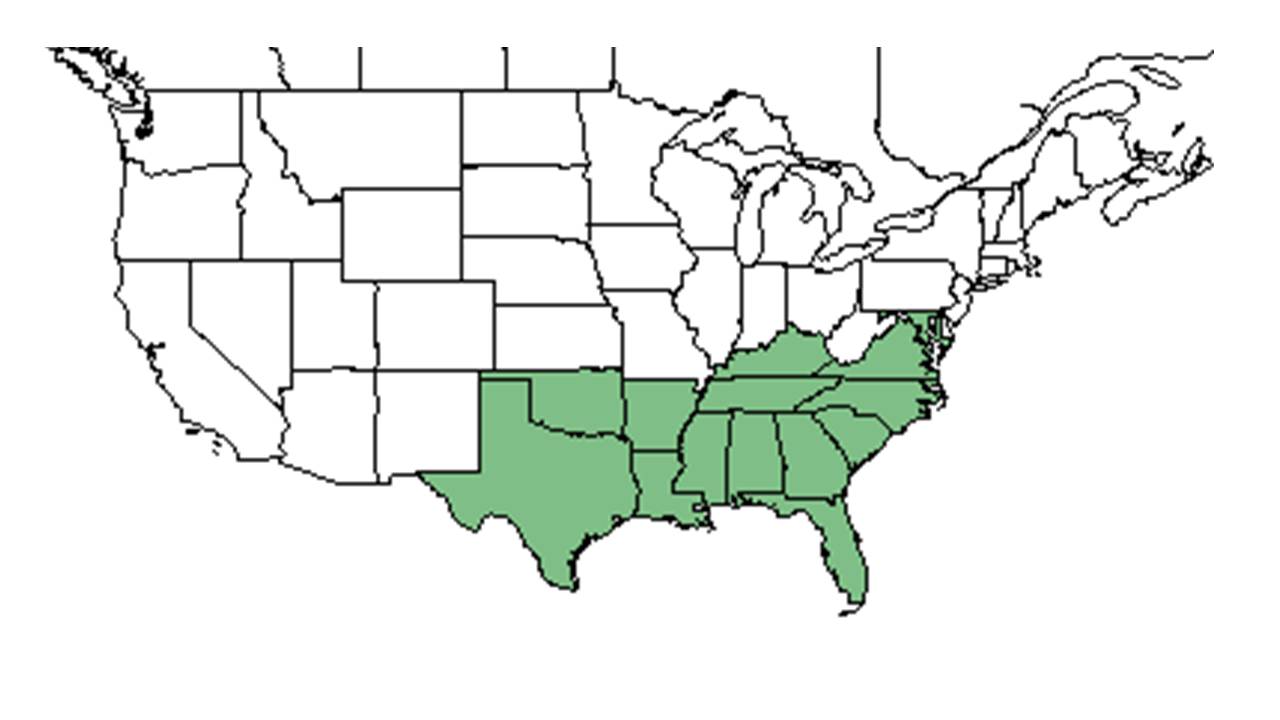Difference between revisions of "Elephantopus tomentosus"
(→Photo Gallery) |
|||
| Line 24: | Line 24: | ||
A description of ''Elephantopus tomentosus'' is provided in [http://www.efloras.org/florataxon.aspx?flora_id=1&taxon_id=200023878 The Flora of North America]. | A description of ''Elephantopus tomentosus'' is provided in [http://www.efloras.org/florataxon.aspx?flora_id=1&taxon_id=200023878 The Flora of North America]. | ||
| − | ==Distribution== | + | <!--==Distribution==--> |
| − | ==Ecology== | + | <!--==Ecology==--> |
===Habitat=== <!--Natural communities, human disturbed habitats, topography, hydrology, soils, light, fire regime requirements for removal of competition, etc.--> | ===Habitat=== <!--Natural communities, human disturbed habitats, topography, hydrology, soils, light, fire regime requirements for removal of competition, etc.--> | ||
It is found in mixed woodlands, pine-hardwoods, edges of mixed hardwoods, in deciduous woodlands along river bluff, edges of rivers, Longleaf pine-Turkey oak woods, open pinelands, and dry upland pine woodlands (FSU Herbarium). Is also found in human disturbed areas such as roadsides and areas that have been clear cut (FSU Herbarium). Requires some light to full light levels (FSU Herbarium). Is associated with areas that have dry, loamy sand and sand soil types (FSU Herbarium). | It is found in mixed woodlands, pine-hardwoods, edges of mixed hardwoods, in deciduous woodlands along river bluff, edges of rivers, Longleaf pine-Turkey oak woods, open pinelands, and dry upland pine woodlands (FSU Herbarium). Is also found in human disturbed areas such as roadsides and areas that have been clear cut (FSU Herbarium). Requires some light to full light levels (FSU Herbarium). Is associated with areas that have dry, loamy sand and sand soil types (FSU Herbarium). | ||
| Line 34: | Line 34: | ||
It has been observed flowering from April through October (FSU Herbarium). | It has been observed flowering from April through October (FSU Herbarium). | ||
| − | ===Seed dispersal=== | + | <!--===Seed dispersal===--> |
| − | ===Seed bank and germination=== | + | <!--===Seed bank and germination===--> |
===Fire ecology=== <!--Fire tolerance, fire dependence, adaptive fire responses--> | ===Fire ecology=== <!--Fire tolerance, fire dependence, adaptive fire responses--> | ||
It is found in areas that are annualy burned, such as Longleaf pine terrain (FSU Herbarium). | It is found in areas that are annualy burned, such as Longleaf pine terrain (FSU Herbarium). | ||
| − | ===Pollination=== | + | <!--===Pollination===--> |
| − | ===Use by animals=== <!--Herbivory, granivory, insect hosting, etc.--> | + | <!--===Use by animals===--> <!--Herbivory, granivory, insect hosting, etc.--> |
| − | ===Diseases and parasites=== | + | <!--===Diseases and parasites===--> |
| − | |||
==Conservation and Management== | ==Conservation and Management== | ||
==Cultivation and restoration== | ==Cultivation and restoration== | ||
Revision as of 11:43, 10 March 2016
| Elephantopus tomentosus | |
|---|---|

| |
| Photo taken by Gil Nelson | |
| Scientific classification | |
| Kingdom: | Plantae |
| Division: | Magnoliophyta - Flowering plants |
| Class: | Magnoliopsida – Dicotyledons |
| Order: | Asterales |
| Family: | Asteraceae ⁄ Compositae |
| Genus: | Elephantopus |
| Species: | E. tomentosus |
| Binomial name | |
| Elephantopus tomentosus L. | |

| |
| Natural range of Elephantopus tomentosus from USDA NRCS Plants Database. | |
Common name: Devil's grandmother
Contents
Taxonomic notes
Description
A description of Elephantopus tomentosus is provided in The Flora of North America.
Habitat
It is found in mixed woodlands, pine-hardwoods, edges of mixed hardwoods, in deciduous woodlands along river bluff, edges of rivers, Longleaf pine-Turkey oak woods, open pinelands, and dry upland pine woodlands (FSU Herbarium). Is also found in human disturbed areas such as roadsides and areas that have been clear cut (FSU Herbarium). Requires some light to full light levels (FSU Herbarium). Is associated with areas that have dry, loamy sand and sand soil types (FSU Herbarium).
Associated species include Sericocarpus asteroids, Eupatorium album, E. perfoliatum, E. rotundifolium, Solidago rugosa, Helianthus strumosus (FSU Herbarium).
Phenology
It has been observed flowering from April through October (FSU Herbarium).
Fire ecology
It is found in areas that are annualy burned, such as Longleaf pine terrain (FSU Herbarium).
Conservation and Management
Cultivation and restoration
Photo Gallery
References and notes
Florida State University Robert K. Godfrey Herbarium database. URL: http://herbarium.bio.fsu.edu. Last accessed: June 2014. Collectors: Loran C. Anderson, James R. Burkhalter, Robert K. Godfrey, Angus Gholson, Wilson Baker, Paul L. Redfearn, Jr., Richard S. Mitchell, John C. Ogden, Cecil R Slaughter, R. Komarek, R. A. Norris, and J. M. Kane. States and Counties: Florida: Alachua, Calhoun, Escambia, Gadsden, Jackson, Jefferson, Leon, Liberty, Okaloosa, Santa Rosa, Wakulla, and Walton. Georgia: Thomas.